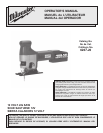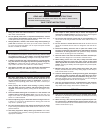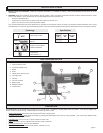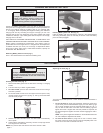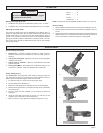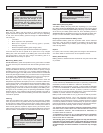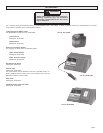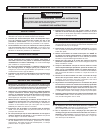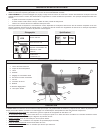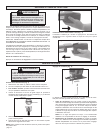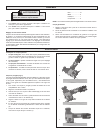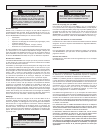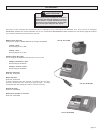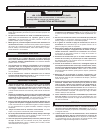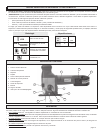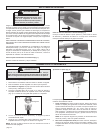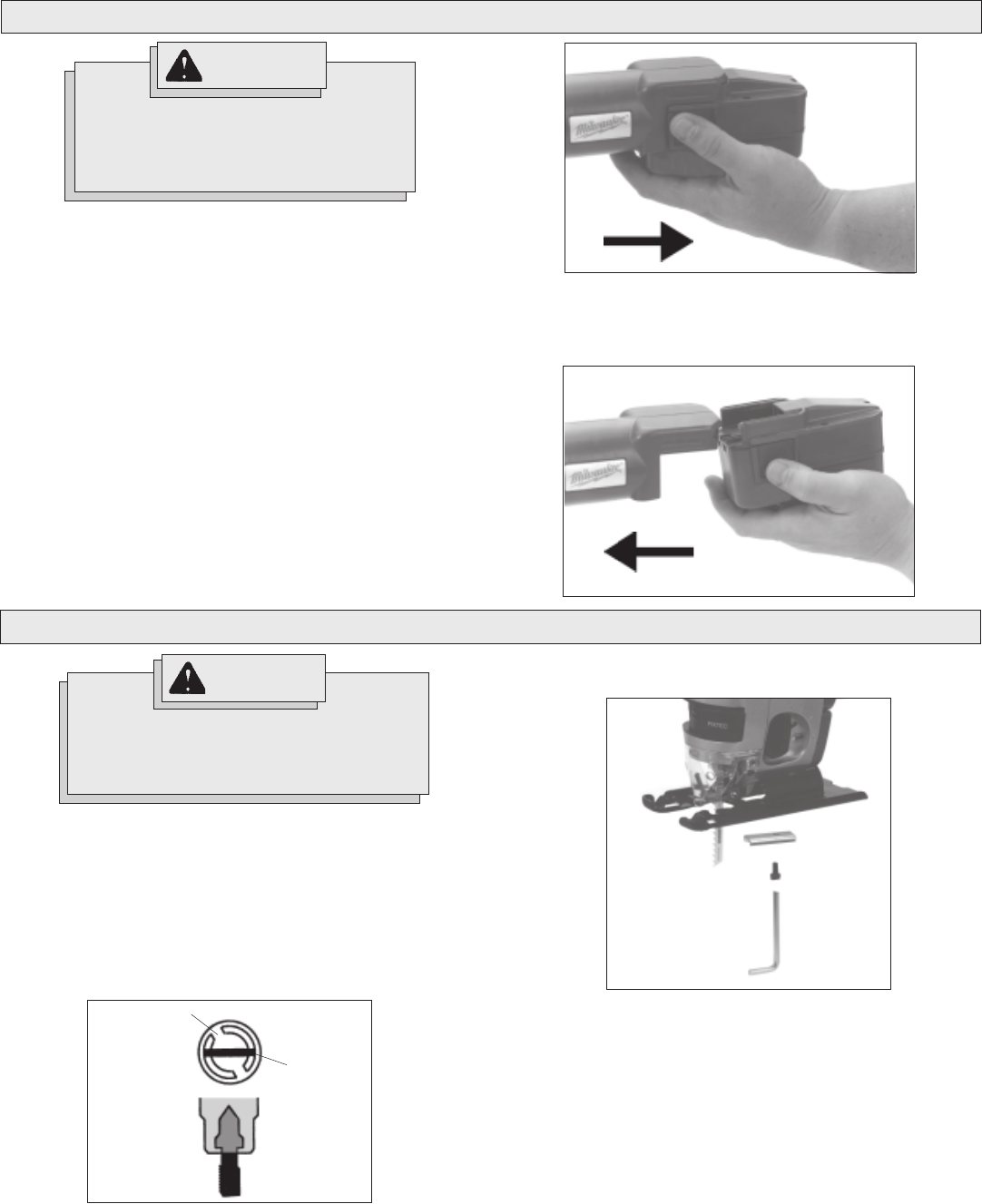
page 4
TOOL ASSEMBLY
CHARGING AND USING BATTERY PACK
Charge your battery pack before using your tool for the first time and
when your tool no longer performs with the power and torque needed for
the job. Full loading capacity of battery pack is only reached after
4 - 5 chargings. Never completely discharge the battery pack. Standard
charging time will vary according to the type of charger you use. The
charging time will also vary depending on the supply voltage and charge
needed. For example, if your battery pack does not require a full charge,
charging time will be less.
FOR SPECIFIC CHARGING INSTRUCTIONS, PLEASE READ THE
CHARGER INSTRUCTION SHEET SUPPLIED WITH YOUR CHARGER.
Battery packs are affected by temperature. Your battery pack will
perform best and have longest life if it is charged when the temperature
is between 60°-80°F (15°-27°C). Do not charge in temperatures below
40°F (5°C) or above 105°F (40°C). Under these conditions, capacity will
be reduced. See “Maintenance”.
Removing Battery Pack from Tool (Fig. 1)
Push in the release buttons and remove the battery pack.
Charge only MILWAUKEE 12, 14.4 and 18 Volt
Power Plus battery packs in Power Plus
chargers. Other types of batteries may ex-
plode causing personal injury and damage.
WARNING!
Always remove battery pack before changing or
removing accessories. Only use accessories spe-
cifically recommended for this tool. Others may
be hazardous.
WARNING!
Inserting Battery Pack into Tool (Fig. 2)
Insert the battery pack from the back by pressing in the release buttons
and sliding the battery pack into the body of the tool. Insert the battery
pack until clamp engages.
Inserting the saw blade (Fig. 3)
1. Remove the battery pack from the tool before inserting or changing
blades.
2. This tool uses only T-Shank Jig Saw blades.
3. To install a blade, push the Quik-Lok tension lever as far as it will go
and hold in position.
4. Fit the saw blade into the slot in the support roller and push it firmly
into the plunger as far as it will go (Fig. 3). The lug of the saw blade
must be in the plunger.
Fig. 4
Adjusting the shoe (Fig. 4)
The shoe may be tilted up to 45° in either direction and moved forward or
backward.
1. To set a tilt angle for angle cuts and bevels, loosen the screw hold-
ing the shoe, pull the base backward slightly until the retaining lugs
are no longer engaged. Tilt to the required preset angle (15°, 30°, or
45°) as read on the scale. Push back into the retaining lugs and
tighten the screw. If angles other than the presets are required, set
the desired angle and tighten the screw without engaging the retain-
ing lugs.
NOTE: If very exact angles are needed it is recommended that a test
cut and subsequent adjustment be made.
2. To move the shoe back for plunge cuts or cuts in corners, loosen
the screw holding the shoe and pull the shoe completely back. The
screw will fit into a slot to hold the shoe at 0°.
5. Release the Quik-Lok tension lever. The saw blade is automatically
held in place.
6. Check that the saw blade is held firmly; the slot in the plunger will be
at an angle to the saw blade.
NOTE: Only use the Quik-Lok tension lever when the tool is OFF.
Fig. 3
Slot
Blade
Fig. 1
Fig. 2



